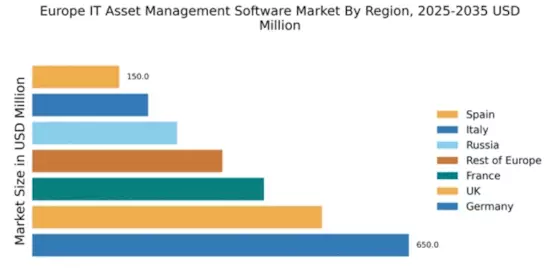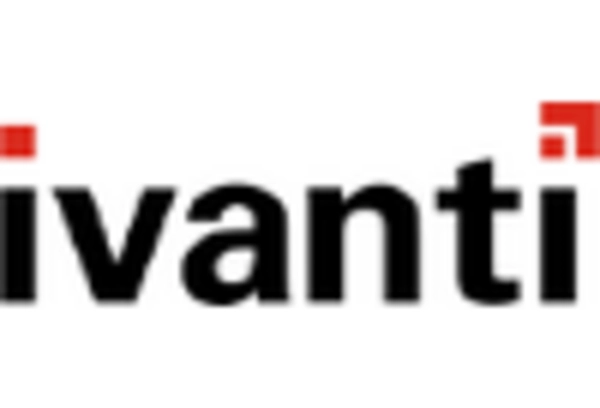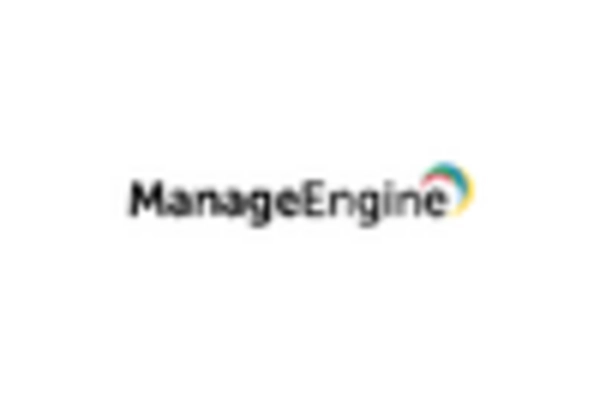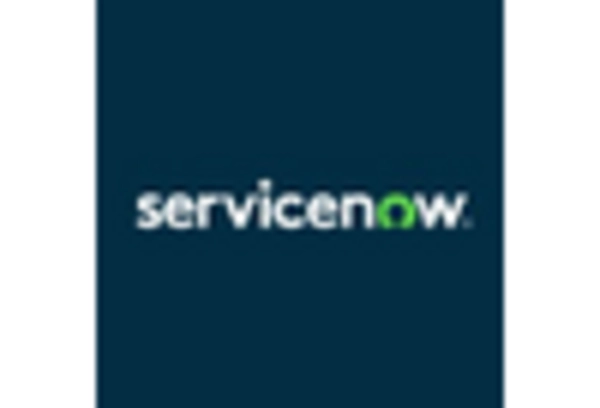Increased Focus on Cost Optimization
In the current economic climate, organizations in Europe are increasingly prioritizing cost optimization strategies. The IT asset-management-software market is witnessing a shift as companies seek to streamline operations and reduce unnecessary expenditures. By implementing effective asset management solutions, businesses can identify underutilized resources and eliminate redundant software licenses, potentially saving up to 30% on IT costs. This focus on financial efficiency is compelling organizations to invest in software that provides comprehensive insights into asset utilization. As a result, the demand for IT asset management tools that facilitate cost control and resource optimization is likely to continue growing, reflecting a broader trend towards fiscal responsibility in IT spending.
Rising Demand for IT Asset Visibility
The increasing complexity of IT environments in Europe drives the demand for enhanced visibility into IT assets. Organizations are recognizing the necessity of tracking hardware and software assets to optimize resource allocation and reduce costs. The IT asset-management-software market is experiencing a surge, with estimates suggesting a growth rate of approximately 15% annually. This demand is fueled by the need for accurate inventory management, which aids in compliance with regulatory requirements. Furthermore, as businesses expand their digital footprints, the ability to monitor assets in real-time becomes crucial. Enhanced visibility not only supports operational efficiency but also mitigates risks associated with asset mismanagement, thereby reinforcing the importance of robust IT asset management solutions.
Integration of Sustainability Initiatives
Sustainability is becoming a critical focus for organizations across Europe, influencing their IT asset management strategies. The IT asset-management-software market is witnessing a growing trend towards integrating sustainability initiatives into asset management practices. Companies are increasingly seeking solutions that help them track the environmental impact of their IT assets, including energy consumption and waste management. This focus on sustainability is likely to drive demand for software that provides insights into the lifecycle of IT assets, enabling organizations to make informed decisions about resource usage. As businesses strive to meet sustainability goals, the integration of eco-friendly practices into IT asset management is expected to become a key driver of market growth.
Regulatory Compliance and Risk Management
The evolving regulatory landscape in Europe necessitates stringent compliance measures for organizations, particularly in data protection and IT governance. The IT asset-management-software market is significantly influenced by the need for compliance with regulations such as GDPR. Companies are increasingly adopting asset management solutions to ensure that their IT assets are compliant with legal standards, thereby reducing the risk of costly penalties. The market is projected to expand as organizations recognize the importance of maintaining compliance and managing risks associated with data breaches. This trend indicates a growing reliance on IT asset management software to facilitate adherence to regulatory requirements, ultimately enhancing organizational resilience.
Shift Towards Remote Work and Digital Transformation
The ongoing shift towards remote work in Europe has accelerated the need for effective IT asset management solutions. The IT asset-management-software market is adapting to this trend as organizations seek to manage distributed assets efficiently. With remote work becoming a permanent fixture for many companies, the demand for software that can track and manage assets across various locations is increasing. This shift is expected to drive market growth, as businesses require tools that provide visibility and control over their IT assets, regardless of where employees are located. The ability to manage assets remotely not only enhances productivity but also ensures that organizations can respond swiftly to changing operational needs.


















Leave a Comment